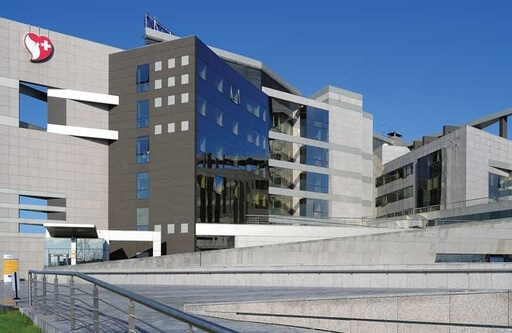Transforaminal Micro-discectomy
“Transforaminal Micro- Discectomy is a minimally invasive technique mainly used for the treatment of lumbar disc herniation from a lateral approach, providing a higher security framework parallely with more tissue preservation. The most important difference with a conventional endoscopic procedure is the lateral approach approximately 12 cm from the middle line through the foramen and the fact that local anesthesia is applied. We enter laterally and do not cut in the middle patient’s back. By this way nerves which lie in the spinal canal remain intact and nerves’ injuries, adhesions and other complications are avoided. Furthermore muscles, bone and intervertebral ligaments which stabilize intervertebral column remain intact.
Pain is significantly less and general anesthesia is not essential, advantages that are attributed to the fact that lateral access allows tissue preservation.
How is endoscopy performed?
An optical endoscope is inserted through a small skin incision under local anesthesia. It is equipped with small cannulas and pushed carefully in front of the side of disc prolapse. The extruded disc material can be under optical control removed. The protruding residues are removed with suitable forceps and a special nucleolyser laser. That contributes to nerve decompression and we have thus immediate relief of the patient.
The intervention lasts 30 to 45 minutes. The entry point is aseptically with a small piece covered and then the aperture is by a suture closed.
Patients are subsequently for 2 hours into a recovery room monitored.
All endoscopic surgical interventions are not the same!
The fundamental difference from the other endoscopic operations –which also constitutes the major advantage-, is the entry point. Other techniques enter from the back in disc hernia. The lateral transforaminal access is much more conservative concerning the tissue in comparison with the posterior access since nerves and ligaments remain intact and local anesthesia can by applied.
Most endoscopic discectomy techniques use the transforaminal access (lateral open for nerve exit). The primary target is, however, the disc himself. The remove of healthy disc material results in volume loss (blank). That will lead to recall of disc tissue prolapse back in the empty space and to decompression of the spinal nerve. This is in many cases successful. Procedures with similar philosophy are for example tissue shrinkage with laser, chomucleolysis, alcohol injections or disc tissue suction. The success rates of these techniques are rather low and are connected with risk of degeneration and increased instability.
Transforaminal Micro- Discectomy aims to the direct and safe removal of the hernia that compresses the nerve- independently from its localization or its size. Physical condition of the disc as well as the mobility and stability of the operated vertebral column part are fully maintained.
What is the postoperative care?
There will be a monitoring examination a day after the operation. Furthermore, a physiotherapist will explain you a particularly targeted rehabilitation program. During the first two weeks a specially equipped plastic corset must be placed. This corset will support your back, allowing you parallely soon to do your daily activities. It is recommended to start physiotherapies after a week. After 6 weeks you must begin strengthening exercises for your back and the abdominal muscles. You can simultaneously and gradually continue your sport activities.
All advantages of endoscopic discectomy at a glance:
• Extremely high success rate >95%
• Very low contamination rate <0.01%
• The intervention is conducted under local anesthesia- general anesthesia is not required!
• In the majority of cases patients feel no pain directly after the surgical operation!
• Complications risk is significantly low since there is almost none tissue damage.
• Instability is absent because the anatomical structures which stabilize vertebral column –ligaments and joints- remain intact. This is the basic difference in comparison with microscopic discectomy.
• Less wound healing pain as well as more stability since back muscles are not cut.
• Low contamination risk because access requires only a very small skin incision (8 mm)
• Less scars in nerve roots region!
• Patient is able to walk without pain already two hours after the operation.
• Brief hospital stay: you can go back to home the day after the operation.
• Already after some days you will be able to continue your usual daily activities.
• Short rehabilitation times: you can go back to job after one or two weeks whereas you can continue your sport activities after 6 weeks.
• Small scars.
“
Clinical Pathway
Investigations(Preoperative check-up)
- Full Blood Count (FBC)
- Urea
- Creatinine
- PT-INR
- aPTT
- K
- Na
- SGOT
- SGPT
- HIV
- HCV
- HBsAg
- ECG
- Thorax X-ray
- Lumbar spine X-ray f+p
- Cardiological examination
- Anaesthesiologist examination
Hospitalisation
- 3 days
Mobilization
- 1st post-operative day
Days of Hospitalisation
- 3 days
1st f-up Appointment, Wound Check, Removal of Stiches/Clips
- In 10 days. Clinical examination by the Treating Physician – sutures removal.
Return to Work
- In 6 weeks.
Diseases
